High in Carrara Quarry
I’m still buzzing with excitement and energy collected during my trip to Italy over the last few weeks. 2018 marks my first visit to Salone del Mobile – the massive and dazzling annual Milan Design Week – which expands over the breadth of the city – both at Salone – the official Fair Ground as well as Fuori Salone – which has become just as large an event spread across this great city. What a phenomenal event with people, ideas, new environments and objects, intriguing and sating the senses. Shapes, textures, colors and materials – how they fit together in familiar and novel ways is on display and shows appreciation, ingenuity and reverence to both design and material. Connecting to material is an important part of my craft. The marble and stone furniture and fixtures at Salone was a standout.
I loved the simplicity and freshness of this piece.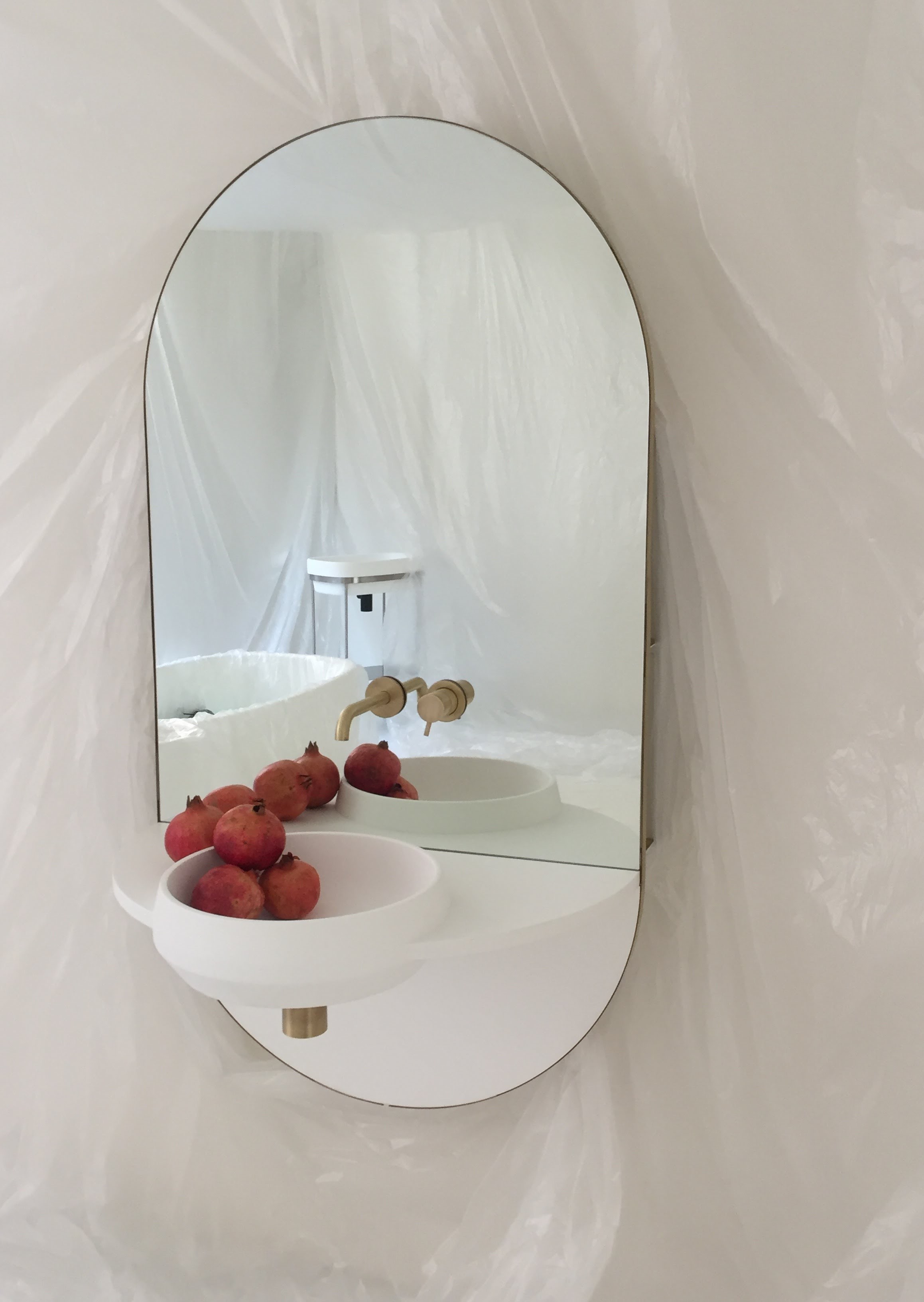
Italy has always had a profound effect on me. I lived in this fertile environment—in Florence for a number of years in my early 20s. Since then I must travel back every few years for a fix; to visit, re-visit and, always, to experience something new.
Right after Milan I finally went to Carrara. This Tuscan town, part of the province Massa-Carrara, is bordered by Liguria and Emilia Romagna, has an extensive coastline. The other defining feature of Carrara and the region are the Apuan Alps, a mountain ridge in the near distance, raised high and parallel to the sea. This town has been on my bucketlist for over 20 years. To discover and explore the environment which Renaissance Master Michelangelo Buonarroti had available and the material deemed worthy of his talent and creative genius. From these mountains the white marble for his Renaissance masterpieces, like David and La Pieta, was sourced.
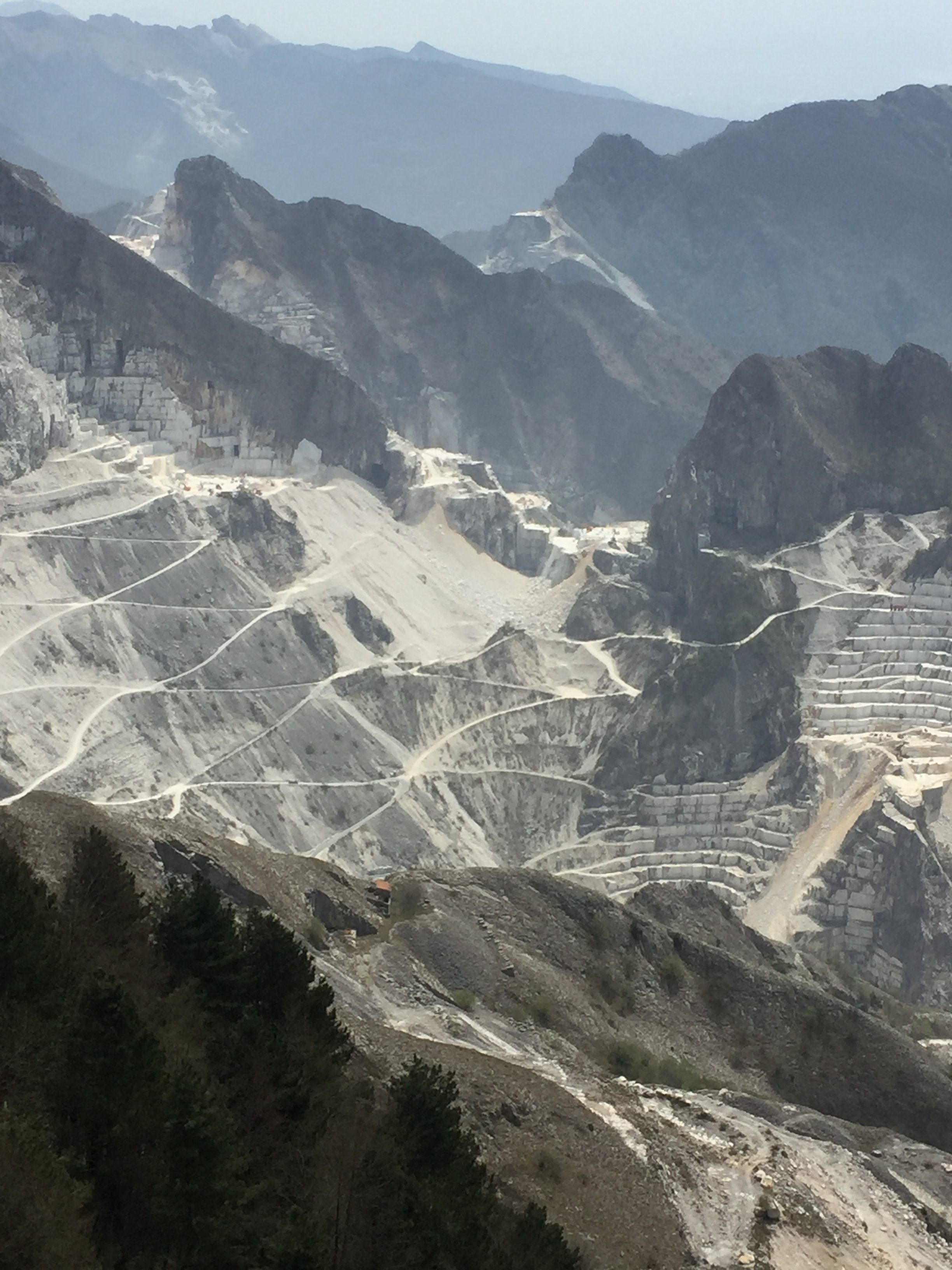
Slicing away at mountains is giant work. Machinery and men are scaled down and look like toys. Michelangelo’s sculpture quarry is still in use though the marble being removed today is a creamier white than before. The mountain is carved away at and no longer the same. Its still beautiful, in a different way than its natural state, as it is sculpted at by man and machines. And it is the void, too, that I came to see.
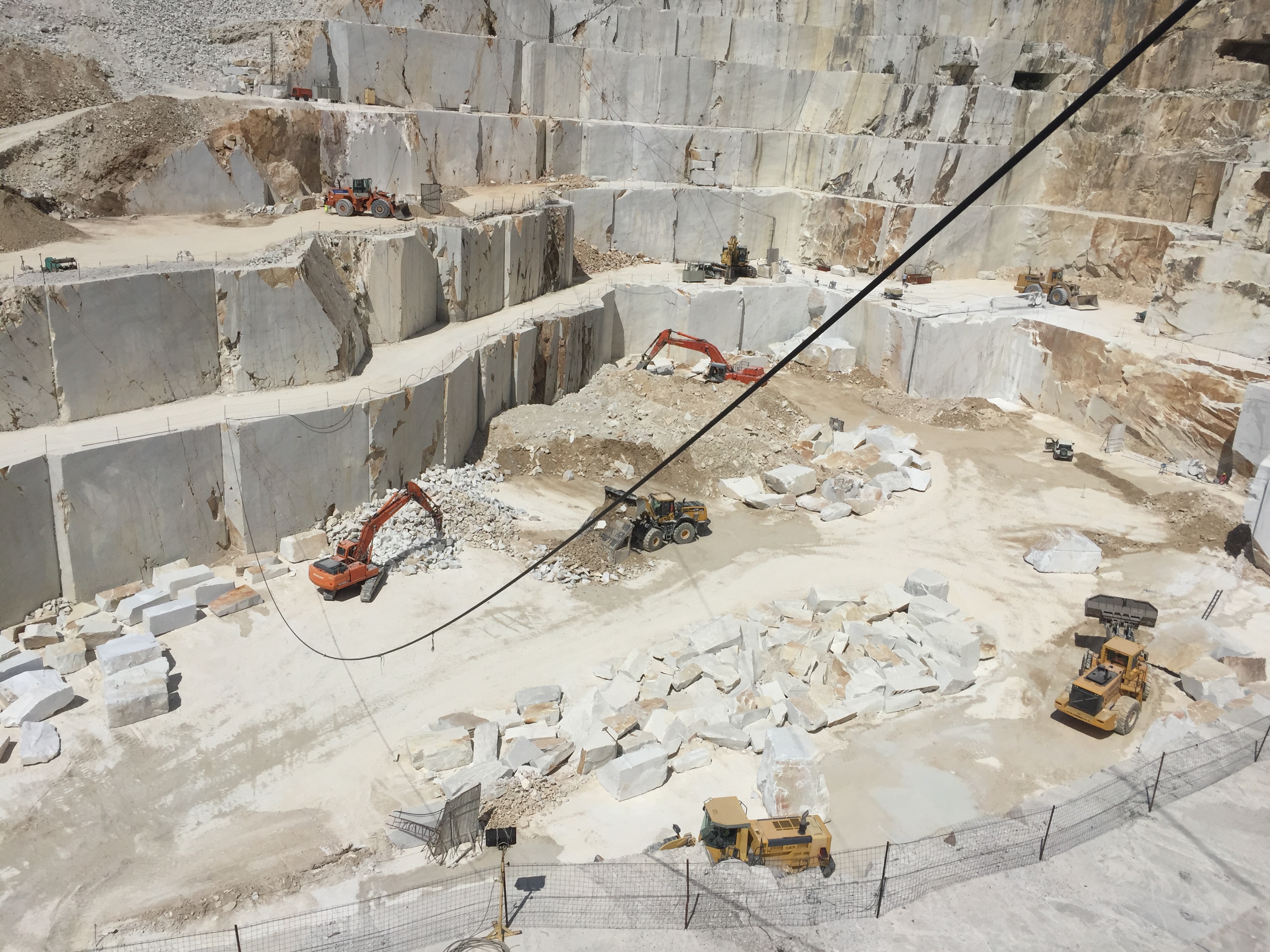
My guides Mariano from Marmosil and my friend Paolo, knew their native topography, brought me to small towns, vantage points along the way, into the quarries and actually through the mountains themselves. (I’m happy to share what stone comes from where if interested!)
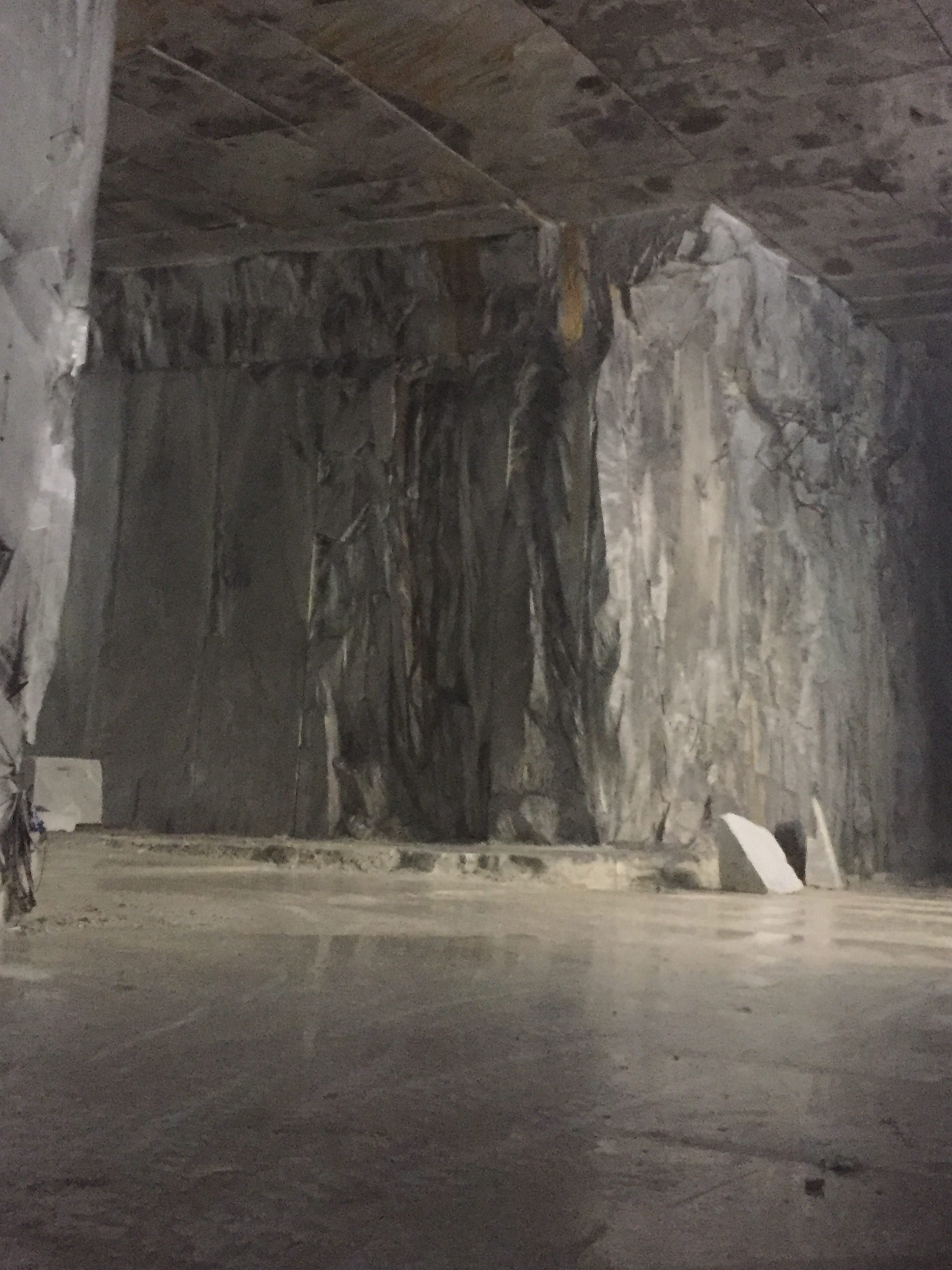
Here I am afterwards in the neighboring town of Pietrasanta with a Carrara marble sculpture by Kan Yasuda entitled “Chiave del Sogno” or “The Key to our Dreams“.
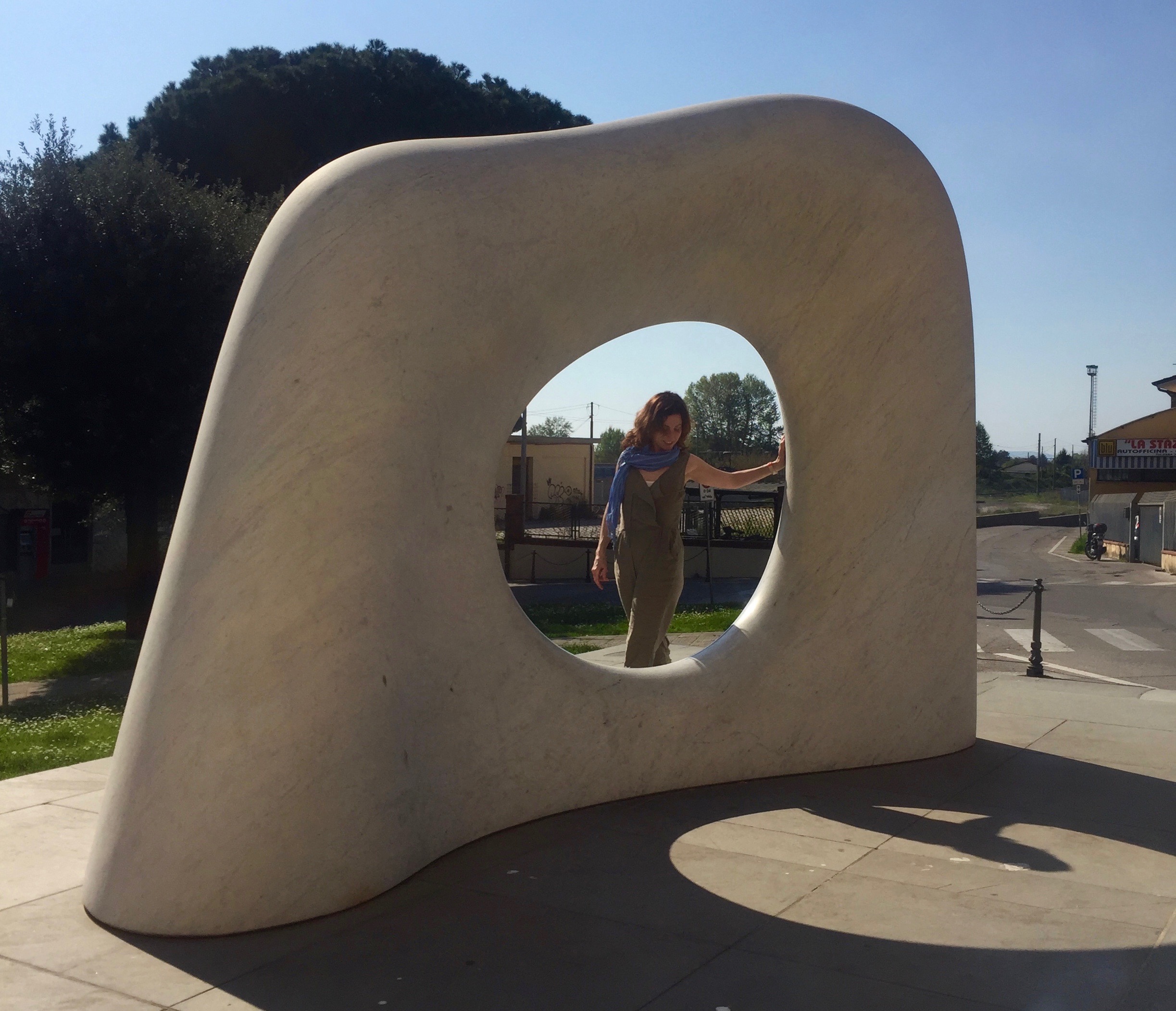
Watching man vs. nature to domesticate this element of natural beauty was big for me. We are taking away these mountains leaving less and less behind. Being high up in those marble mountains felt incredibly grounding.
The ingenuity and design that Italy is known for along with its staggering natural beauty makes for a compelling and complex country indeed. It allows something as old as this mountain range—once under the sea—appear like a light shining on both the ancient and the new. I continue to be awed and inspired by this people and this place, eternal cities and landscapes creating eternal, endlessly livable design.